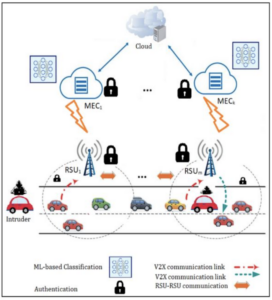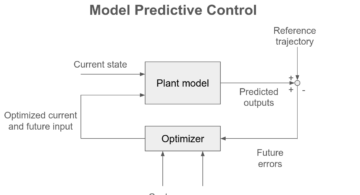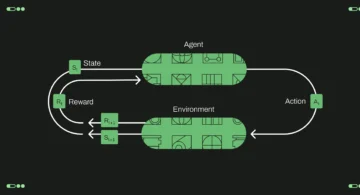Eyes, JAPAN
Protecting Vehicle Data in a Rapidly Evolving Connected Ecosystem
WANG WEIYU
On January 7, 2025, the world’s largest consumer electronics event, the Consumer Electronics Show (CES), kicked off in Las Vegas, drawing global attention. Among the many highlights of the event, the automotive sector once again took center stage, commanding as much attention as it has in previous years.
A standout trend at CES 2025 is the unprecedented depth and breadth of integration between artificial intelligence (AI) technology and the automotive industry. From in-vehicle entertainment systems to vehicle control and autonomous driving, AI is revolutionizing the way vehicles operate and interact with their environments. These advancements not only enhance the intelligence of modern vehicles but also redefine the scope of automotive applications, driving transformative changes across the industry. In response to this trend, an increasing number of automotive companies are ramping up their investments in AI, aiming to seize opportunities in this wave of technological innovation.
The Trend of Automotive Intelligence Accelerates Connectivity Demand
The wave of automotive intelligence is advancing at an unstoppable pace, with vehicle connectivity playing a pivotal role in this process. The Internet of Vehicles (IoV) is a complex system comprising in-vehicle networks, inter-vehicle networks, and vehicle-to-cloud networks. Through wireless communication and information exchange, IoV tightly integrates internal vehicle systems with external environments. Each component has unique functions and significance, forming the foundation of modern intelligent driving.
From the definition of IoV, two main directions of vehicle connectivity can be identified. First, the in-vehicle network functions like the nervous system of a vehicle. Relying on technologies such as CAN, LIN, FlexRay, MOST, and Ethernet, it tightly connects various electrical and electronic units within the vehicle. This enables real-time data transmission and control, empowering vehicles with state sensing, fault diagnostics, and intelligent control capabilities. These advancements enhance driving safety and convenience with features like automatic parking, adaptive cruise control, lane-keeping assistance, and collision warnings.
On the other hand, inter-vehicle networks (IVNs) and vehicle-to-cloud networks (VCNs) enable connectivity between vehicles and their external environment. The inter-vehicle network is an open, mobile, self-organizing network composed of vehicles, roadside units, and pedestrians as nodes. By leveraging global positioning systems (GPS) and wireless communication technologies such as Dedicated Short-Range Communication (DSRC) and cellular networks, it provides high-speed data access for vehicles in motion, facilitating V2X (Vehicle-to-Everything) information exchange.
The vehicle-to-cloud network, meanwhile, uses vehicles as mobile terminals and relies on long-range wireless communication technologies to connect vehicles with the internet. This network enables the transmission of information between vehicles and cloud services, offering various intelligent services such as navigation and remote control, seamlessly linking vehicles to cloud-based solutions.
In the future, cars will no longer be merely a means of transportation but will gradually evolve into intelligent mobile terminals with powerful computing, communication, and interaction capabilities. Alongside this transformation, the amount of data they generate will grow exponentially, placing stricter demands on the connectivity technologies used for data transmission—higher data bandwidth and near-zero latency performance will become essential requirements.
Traditional Communication Technologies Cannot Meet the Demands of In-Vehicle Networks
As vehicles become increasingly intelligent and automated, many functions and applications demand not only robust computing capabilities but also higher requirements for communication technology in terms of security, data bandwidth, and latency. For instance, high-resolution sensors drive the need for higher data transmission rates between sensors and centralized processors. Heterogeneous computing and AI technologies require allocating different computational tasks to associated cores. Additionally, vehicles require more advanced 360-degree automated perception to better sense the surrounding environment. These applications collectively drive the demand for high-speed in-vehicle connectivity technologies.
Currently, the connections between ECUs within vehicles primarily rely on automotive Ethernet, while PCIe is used only for internal ECU processor connections, requiring network adapters to bridge Ethernet and PCIe. However, as vehicle intelligence and connectivity accelerate, future vehicles will resemble data centers on wheels, with massive data volumes. Statistics show that a single intelligent connected vehicle generates approximately 10TB of data daily—five to ten times that of traditional fuel-powered vehicles—and computational demands will increase exponentially. Consequently, the backbone data transmission networks in vehicles must support high-bandwidth, low-latency, high-speed interfaces to meet these growing demands.
Conclusion
As vehicles become increasingly intelligent and connected, automotive data security has become a critical issue that cannot be overlooked. A cyber threat to a vehicle could pose significant risks to drivers, passengers, and even pedestrians on the road. Therefore, while pursuing automotive intelligence, manufacturers must prioritize safety above all.


 2025/12/12
2025/12/12 2025/12/07
2025/12/07 2025/11/06
2025/11/06 2025/10/31
2025/10/31 2025/10/24
2025/10/24 2025/10/03
2025/10/03 2025/08/30
2025/08/30 2025/08/22
2025/08/22